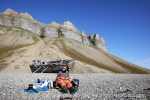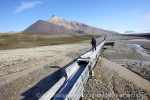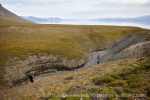-
current
recommendations- Liefdefjord
New page dedicated to one of Spitsbergen's most beautiful fjords. Background information and many photos.
- New Spitsbergen guidebook
The new edition of my Spitsbergen guidebook is out and available now!
- Liefdefjord
New page dedicated to one of Spitsbergen's most beautiful fjords. Background information and many photos.
Page Structure
-
Spitsbergen-News
- Select Month
- June 2025
- May 2025
- April 2025
- March 2025
- February 2025
- January 2025
- December 2024
- November 2024
- October 2024
- September 2024
- August 2024
- July 2024
- June 2024
- May 2024
- April 2024
- March 2024
- February 2024
- January 2024
- December 2023
- November 2023
- October 2023
- September 2023
- August 2023
- July 2023
- June 2023
- May 2023
- April 2023
- March 2023
- February 2023
- January 2023
- December 2022
- November 2022
- October 2022
- September 2022
- August 2022
- July 2022
- June 2022
- May 2022
- April 2022
- March 2022
- February 2022
- January 2022
- December 2021
- November 2021
- October 2021
- September 2021
- August 2021
- July 2021
- June 2021
- May 2021
- April 2021
- March 2021
- February 2021
- January 2021
- December 2020
- November 2020
- October 2020
- September 2020
- August 2020
- July 2020
- June 2020
- May 2020
- April 2020
- March 2020
- February 2020
- January 2020
- December 2019
- November 2019
- October 2019
- September 2019
- August 2019
- July 2019
- June 2019
- May 2019
- April 2019
- March 2019
- February 2019
- January 2019
- December 2018
- November 2018
- October 2018
- September 2018
- August 2018
- July 2018
- June 2018
- May 2018
- April 2018
- March 2018
- February 2018
- January 2018
- December 2017
- November 2017
- October 2017
- September 2017
- August 2017
- July 2017
- June 2017
- May 2017
- April 2017
- March 2017
- February 2017
- January 2017
- December 2016
- November 2016
- October 2016
- September 2016
- August 2016
- July 2016
- June 2016
- May 2016
- April 2016
- March 2016
- February 2016
- January 2016
- December 2015
- November 2015
- October 2015
- September 2015
- August 2015
- July 2015
- June 2015
- May 2015
- April 2015
- March 2015
- February 2015
- January 2015
- December 2014
- November 2014
- October 2014
- September 2014
- August 2014
- July 2014
- June 2014
- May 2014
- April 2014
- March 2014
- February 2014
- January 2014
- December 2013
- November 2013
- October 2013
- September 2013
- August 2013
- July 2013
- June 2013
- May 2013
- April 2013
- March 2013
- February 2013
- January 2013
- December 2012
- November 2012
- October 2012
- September 2012
- August 2012
- July 2012
- June 2012
- May 2012
- April 2012
- March 2012
- February 2012
- January 2012
- December 2011
- November 2011
- October 2011
- September 2011
- August 2011
- May 2011
- April 2011
- March 2011
- February 2011
- January 2011
- December 2010
- November 2010
- September 2010
- August 2010
- July 2010
- June 2010
- May 2010
- April 2010
- March 2010
- February 2010
- November 2009
- October 2009
- August 2009
- July 2009
- June 2009
- May 2009
- April 2009
- March 2009
- February 2009
- January 2009
- December 2008
- November 2008
- October 2008
- August 2008
- July 2008
- June 2008
- May 2008
- April 2008
- March 2008
- February 2008
- April 2000
- Select Month
-
weather information
-
Newsletter

| Guidebook: Spitsbergen-Svalbard |
Home
→ September, 2020
Monthly Archives: September 2020 − Travelblog
Walk in the forest near Pyramiden
Tue
22 Sep
2020
Back to Spitsbergen’s beautiful aspects, which seem even remoter this year. It took several attempts to get to Pyramiden this time. In Spitsbergen, everything – well, almost – depends on the weather. The trip to Pyramiden by boat is more than 50 kilometres, and our boat wasn’t exactly Antigua or anything bigger. So, the weather should be ok. But we got our chance and arrived in Billefjord after a lunch break in Skansbukta.
Pyramiden
In Pyramiden, we could rely on a friendly welcome at Hotel Tulipan. A lot has happened there in recent years, the standard is improved – the bar is lovely and the food is good. The old, Soviet-style rooms are not available anymore, to my personal regret, but I guess that’s the walk of time. Some life has also returned to the Culture House. And they keep working here and there.

Things are happening in Pyramiden. Here, the old canteen is being renovated.
The devonian forest in Munindalen
But we wanted a walk in the forest. Well, in the Pyramiden area, you can not walk in a forest, but you can actually walk to a forest. In Munindalen, to be more accurate. This forest grew in the Devonian, more than 350 million years ago, probably in a river plain. Then, the trees were buried by sand and mud during a flood … and they became fossilised. Just as they were, in a vertical position, or “in situ”, as geologists say. One of the oldest forests in the world.

Imprint of a fossilised tree in Devonian rocks, Munindalen.
There were no trees before the Devonian. (And if you happen to find similar fossils in Pyramiden itself: they date to the Carboniferous, just as the coal, so they are a good bit younger than the Devonian trees in Munindalen). So it is worth getting wet and very cold feet as you have to step into the icy meltwater river because the outcrop is a little rockwall right next to it (or just bring your rubber boots, which we forgot …).

Even the reindeer were bigger than elsewhere in Pyramiden back then 😉
Seriously: they had horses.
Then, the fog came and settled in for several days, cutting Spitsbergen physicall off from the outside world (planes don’t land in Longyearbyen in dense fog). I spent most of the time on the return trip to Longyearbyen holding on to the GPS 🙂
If you would like to take a virtual trip to Pyramiden while it is hard to get there in real life – check the Pyramiden panorama pages, there is plenty of stuff there!
Gallery: Pyramiden and Munindalen
Some impressions from the trip from Longyearbyen via Skansbukta to Pyramiden and Munindalen.
- gallery anchor link: #gallery_1860
Click on thumbnail to open an enlarged version of the specific photo.
Blog: trip to Svenskehuset at Kapp Thordsen
Mon
7 Sep
2020
After all the bad and even terrible news of the last couple of weeks, regarding a potentially deadly virus that keeps making everybodies lives difficult and a very deadly polar bear attack, it is easy to forget that Spitsbergen is still a beautiful place. It is time for a few photos to bring that back to mind.
It is a couple of weeks ago now, but that doesn’t matter. Isfjord was flat as a mirror, so we took the opportunity for a Zodiac tour from Longyearbyen to Svenskehuset at Kapp Thordsen.
Gallery: Svenskehuset
- gallery anchor link: #gallery_1850
Click on thumbnail to open an enlarged version of the specific photo.
I am not going to repeat the dramatic history of the “Swedish house” (Svenskehuset) at Kapp Thordsen here, as I have recently compiled a special side dedicated to Svenskehuset – including panorama images, as you may already have guessed. Have a look there if you are interested. I do recommend it. Finally getting these images was a strong motivation to take this trip.
And other than that, spending a long day in fine weather in a place like this, with fine views over Isfjord and all the big and small impressions of the scenery and the tundra, is an experience of the kind of which you (or, at least, I) just can’t get enough in life.
Regarding the small impressionf of the tundra: I have always experienced it as slightly disappointing to photograph the flowers. Because of the limited depth of field with macro photography, only a small part of the flower appears in focus. But today, photo technolocy enables us to take it a good step further. “Focus stacking” is the key. It requires some effort regarding preparations, equipment, photography and editing, but I think it is worth it in the end:

Arctic bell-heather near Svenskehuset.
Fokus-stacking makes it possible to have almost the whole flower in focus.
News-Listing live generated at 2025/June/16 at 03:37:06 Uhr (GMT+1)




















































